
What if I invest at a market all-time high (2024)?
In February 2024, Japan’s benchmark index reached an all-time high, marking a significant milestone after a prolonged interval of 34 years. The stock market in the Land of Rising Sun is in stark contrast to India’s in terms of reaching all-time highs (ATHs) – we witnessed multiple ATHs within a single year.
Many investors worry about investing at all-time highs in the market. It goes without saying that it is always prudent to invest when markets offer attractive prices. We analyzed the past data to see how investing at ATHs performs in terms of returns. Our analysis focused solely on benchmark data of Nifty 50, representing large-cap stocks in India.
Firstly, statistics reveal that the Nifty 50 has reached ATHs more than 250 times in the last decade alone.
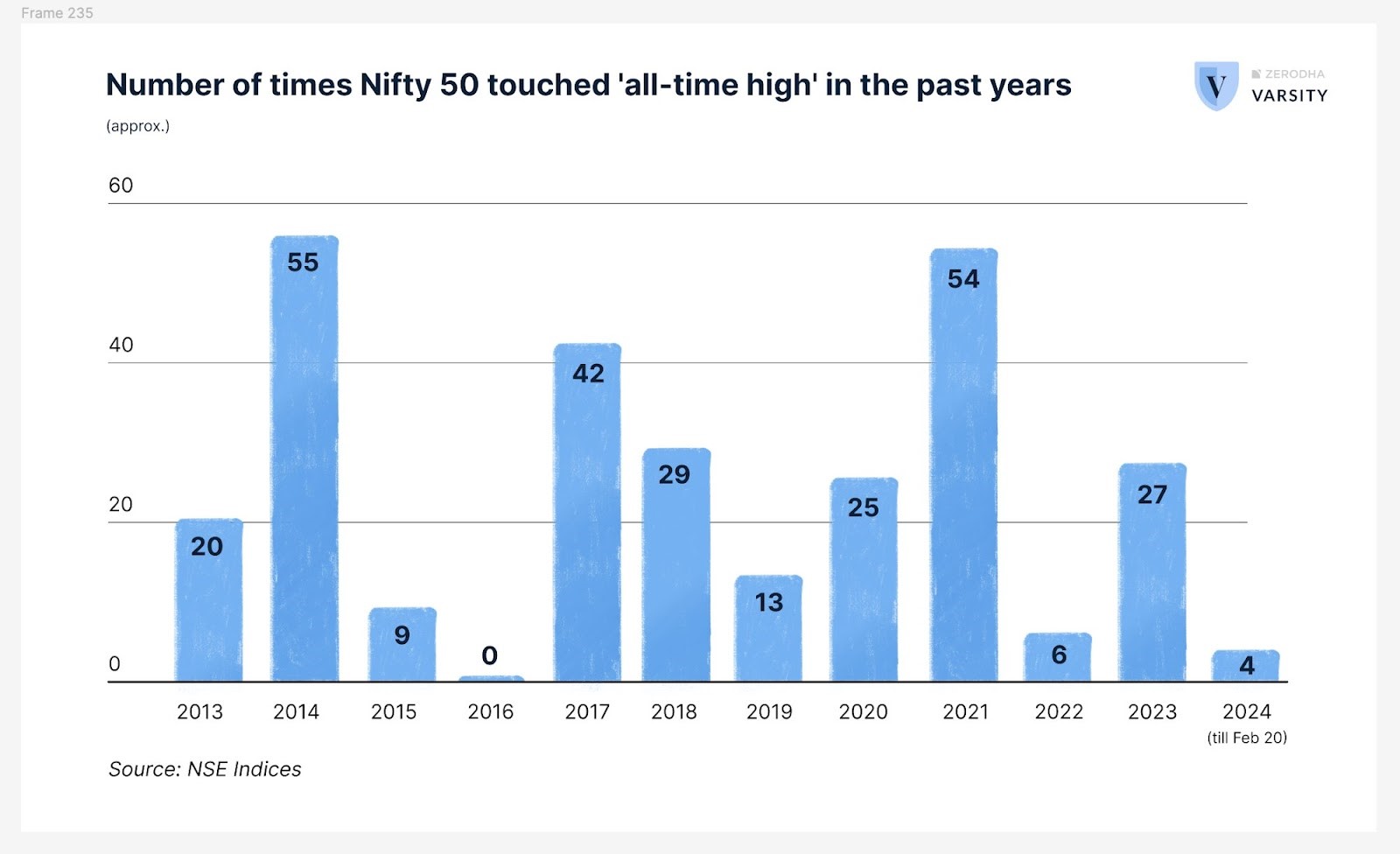
Secondly, most all-time highs (ATHs) tend to cluster together. This phenomenon reflects that markets gain momentum in the upward market. The periods of bullish sentiment often lead to successive ATHs, which occur closely.
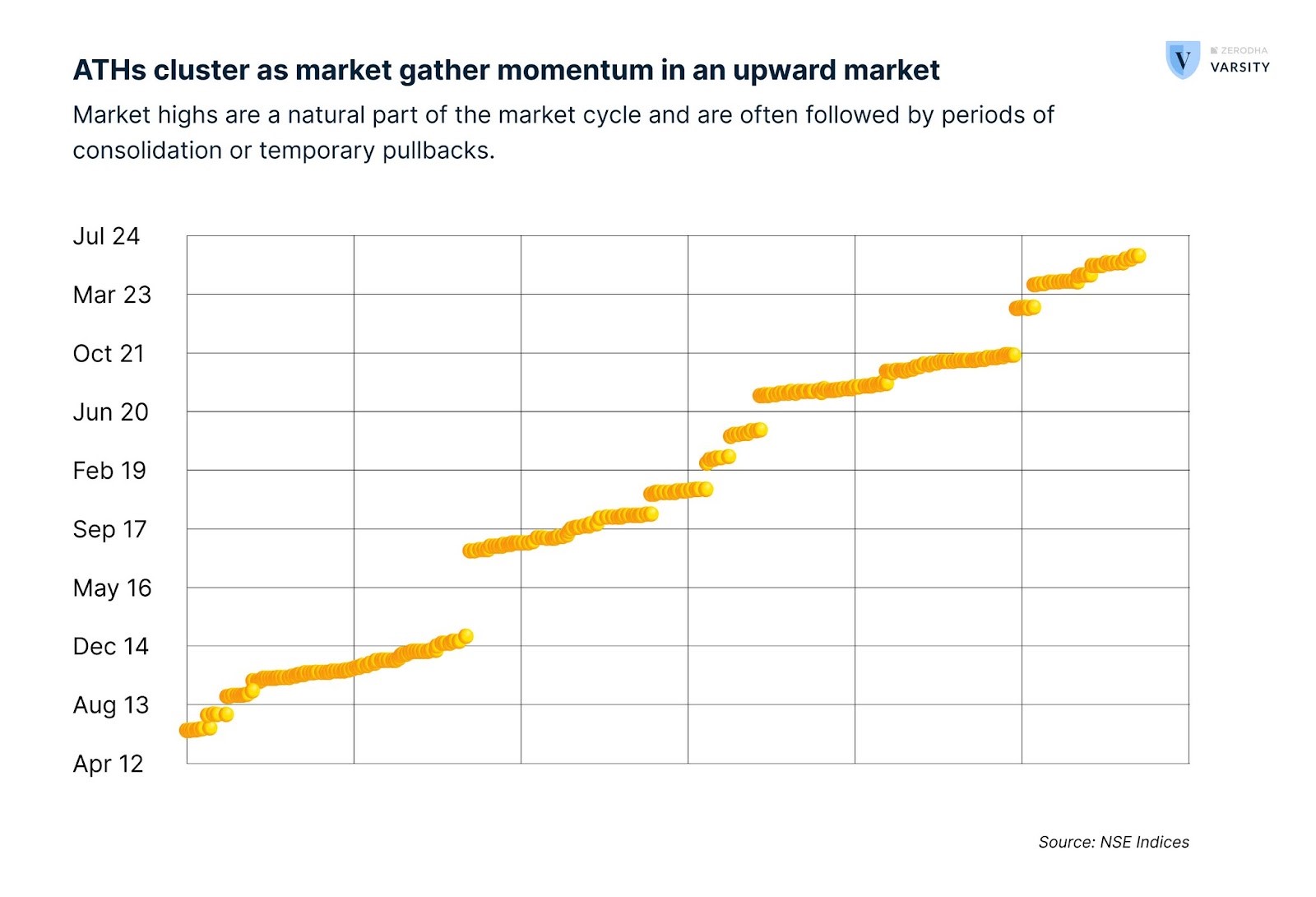
However, the short-term returns associated with investing at these peaks have been quite volatile. This means that while there’s a chance of immediate gains, there’s also a risk of experiencing short-term losses. Fortunately, long-term investors can breathe a sigh of relief. Data suggest that despite the initial volatility, the long-term returns for investments made at ATHs may not be detrimental.
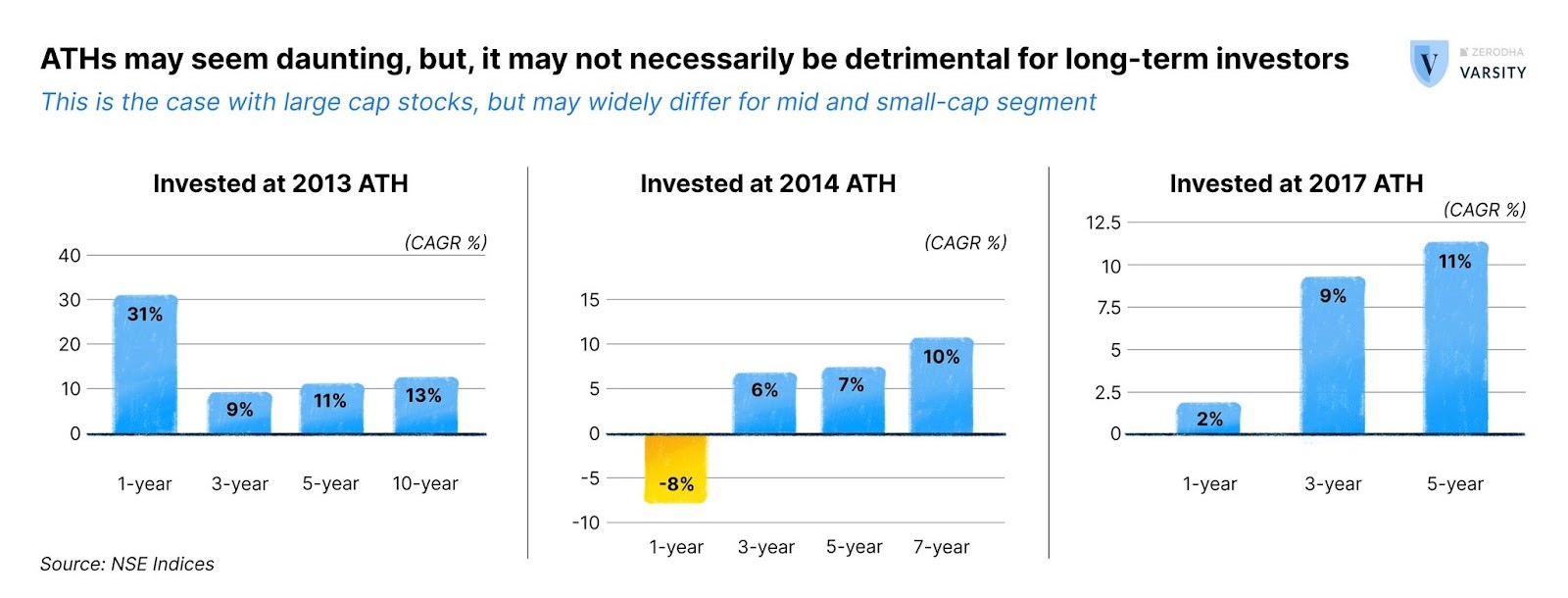
What if you waited for a few months to invest after the market hits an ATH? We looked at that too. Pausing investments during ATHs and entering the market six months later doesn’t yield drastically different results in the long run.
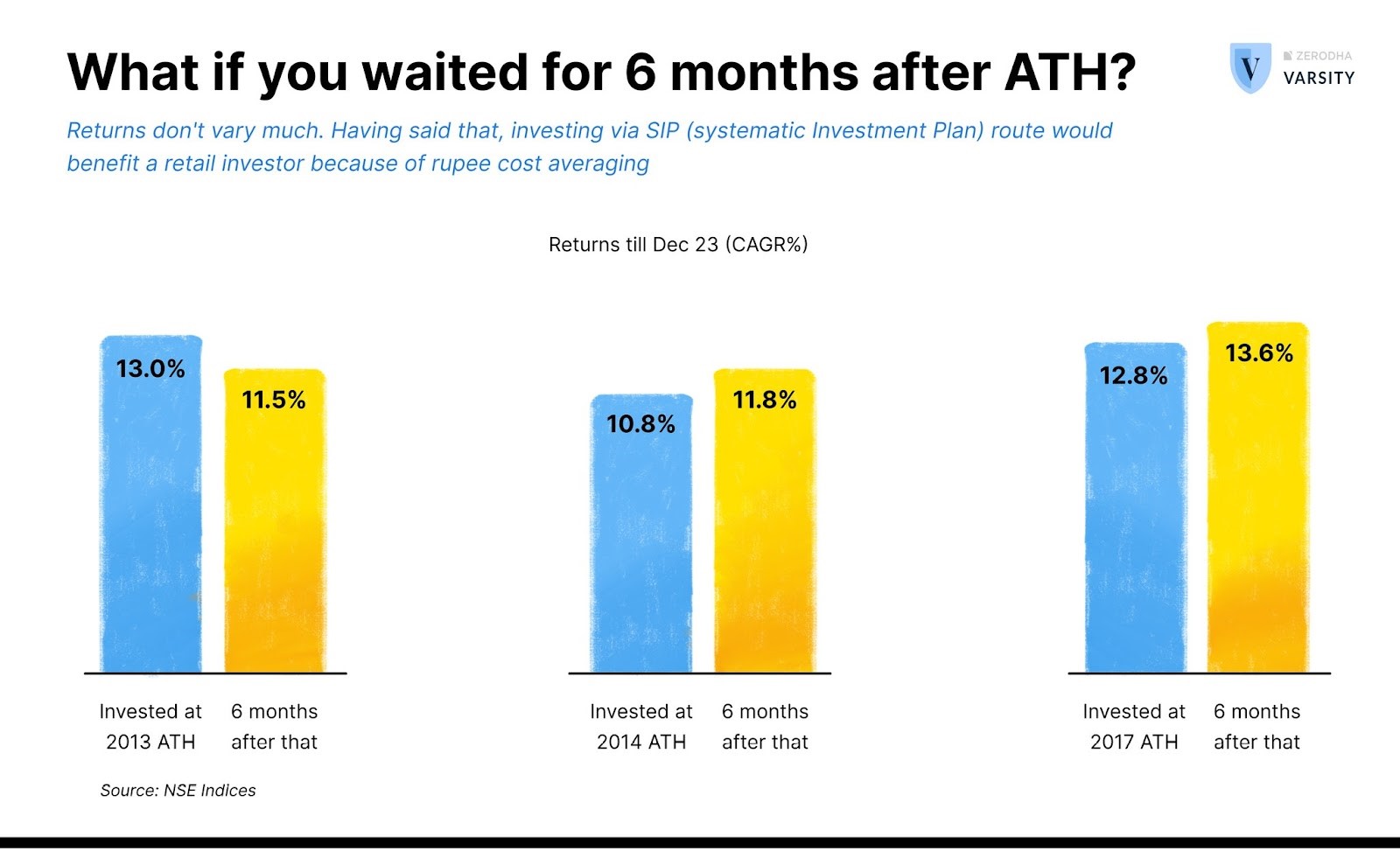
Note that past performance is not a guarantee of future results.
It’s crucial to remember that these findings are based solely on the past performance of the Nifty 50, which represents large-cap stocks. These results may not necessarily translate to mid-cap and small-cap stocks.
For retail investors with a long-term investment horizon, Systematic Investment Plans (SIPs) offer a prudent solution. Here’s a table that shows the 10-year return from monthly SIPs in various indices.
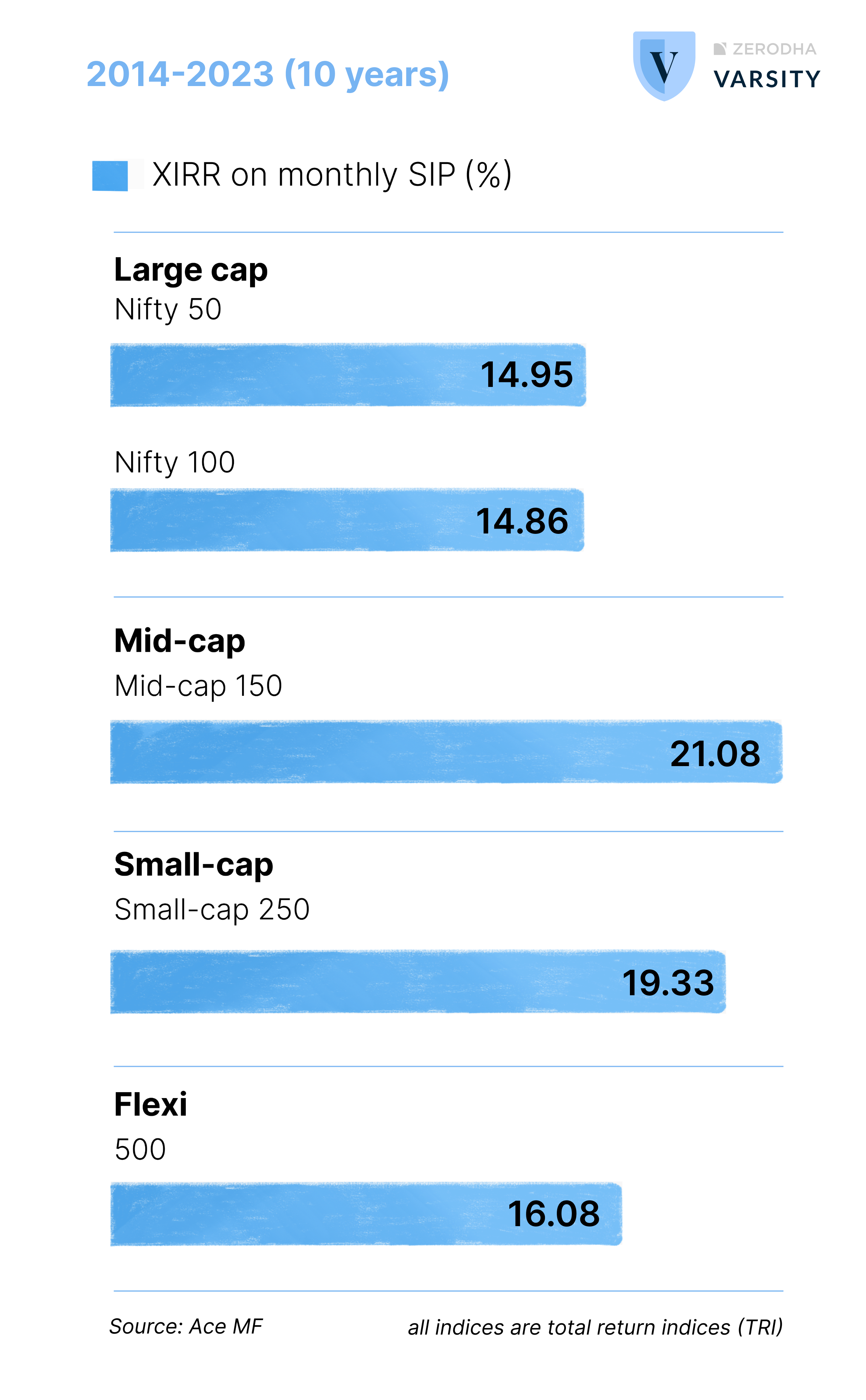
By investing a fixed amount at regular intervals, SIPs help in rupee-cost averaging, which essentially evens out the cost of acquiring units over time. This allows investors to benefit from potential long-term growth.
PS: Special thanks to my colleague Faisal Mohammed, who helped me figure out an Excel formula to identify the number of ATHs in each year.

If you’re passionate about technology, energy, aviation, or healthcare, this is the place to be! The forum is a great resource for industry insights, investment discussions, and the latest innovations from General Electric. Join the conversation with fellow professionals and enthusiasts to stay updated on trends and developments that shape our world. Don’t miss out—visit The GE Forum today!